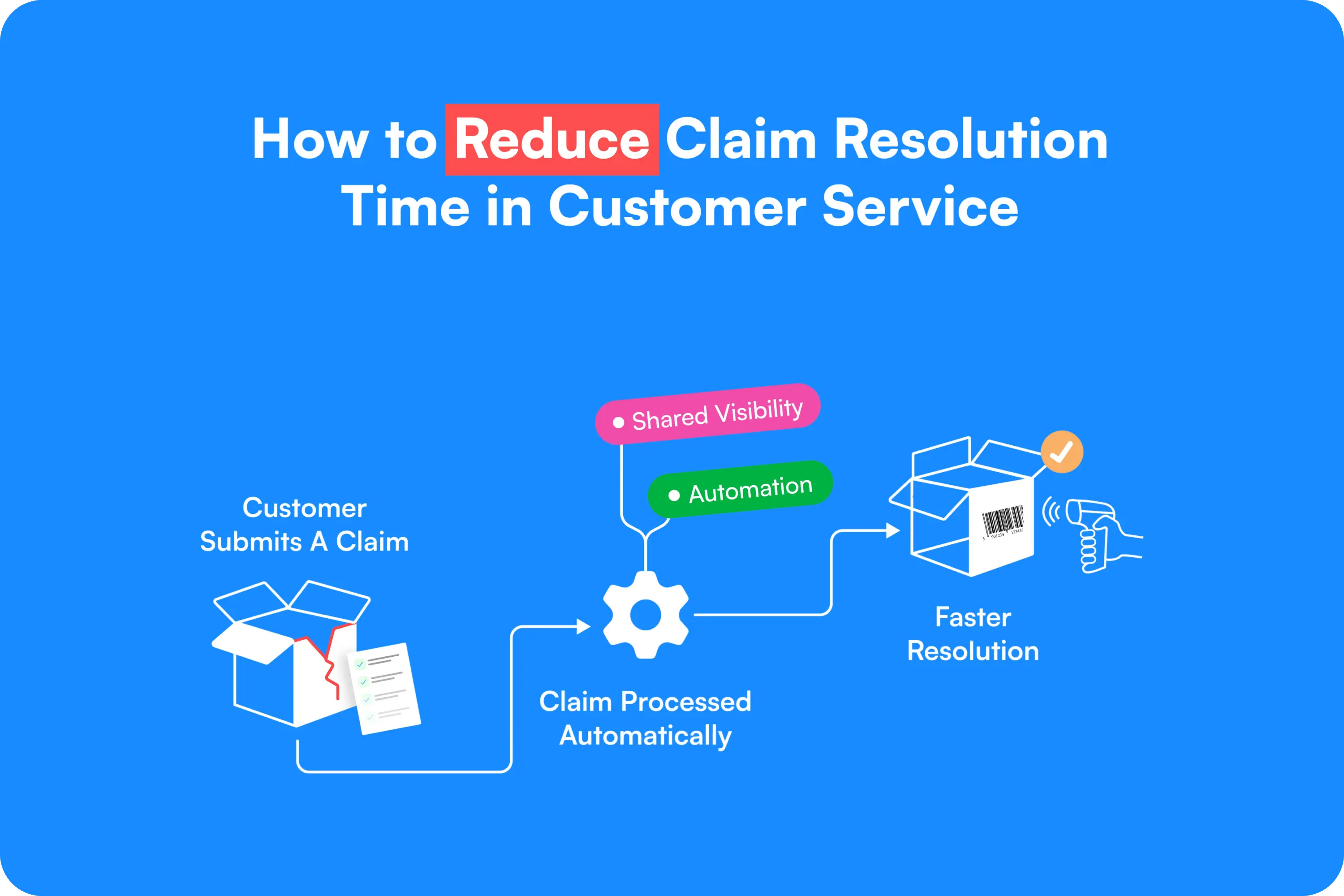
The speed at which you resolve a customer claim (like a broken product or missing part) directly affects your costs and customer trust. When claims are slow, labor costs increase, and customer satisfaction drops.
Reducing resolution time isn't complicated, but it requires standardizing the process to eliminate unnecessary steps.
Here is a straightforward approach used by teams that resolve claims the fastest.
1. Find where time is being lost
Before you can fix slow claims, you need to see what’s actually slowing things down.
Common causes:
- Too many emails between customers, suppliers, and internal teams
- Missing information from customers (photos, order numbers, receipts)
- Manually updating spreadsheets or tracking tools
- No shared visibility between departments
Most of these problems come from one thing: disconnected systems.
2. Get structured information from customers
When customers can submit claims in a clear, guided form, your team spends less time collecting details.
Instead of going back and forth over email, you receive all the needed info right away, including photos, product numbers, and purchase details.
That means your agents can move straight to solving the issue.
3. Automate what happens next
Not every claim needs human attention.
You can save time by automating simple steps like:
- Assigning claims to the right team or supplier
- Sending confirmation emails
- Creating shipping labels or refunds
Move the claim through departments using automation rules:
- Instant Routing: Instead of an agent sending an email, set up a rule: if a claim is over a certain value, it automatically notifies the Finance team's dashboard.
- Single-Click Escalation: When a supplier needs to approve a repair, the agent uses a single button to share the case data via a portal, logging the approval request immediately.
- Delegate Low-Risk Decisions: Auto-approve low-value claims (e.g., under $25). The system instantly issues the refund or tells the customer to keep the item, saving the agent's time entirely.
This removes manual work and keeps cases moving, even when your team is busy. You can achieve this by setting up workflows.
4. Connect customer service with operations
Often, customer service, warehouse, and operations teams work separately.
That means the same case gets handled in multiple places, creating delays and confusion.
When everyone works in the same system:
- The warehouse can log incoming products
- Customer service sees updates in real time
- Operations can track performance and spot recurring issues
Integrate the physical inspection into the digital record:
- Scan and Grade: Warehouse staff scan the item and assign a Grade (e.g., Grade A). This action instantly triggers the next resolution (like an automatic refund or repair request).
- Shared Context: Any photos or notes added by the warehouse are immediately visible to the customer service agent. The agent sees why the item was graded that way without sending an internal message.
It’s a simple change that saves hours every week. Check more information about the Warehouse Module.
5. Use data to keep improving
Once your workflow is in one place, you can start measuring it.
Look at:
- Average time to resolve a claim
- Which suppliers or products cause the most cases
- How many credit notes are recovered
With that insight, you can find small improvements that make a big difference over time. Our Analytics section can offer valuable insights into your data.
What it looks like in practice
Retailers using Claimlane often reduce claim resolution times significantly.
Not because they hire more people, but because their teams stop wasting time on emails and spreadsheets.
Everyone works from the same view, so claims get solved faster, and customers get answers sooner.
In short
Reducing claim resolution time isn’t complicated.
You just need:
- Clear intake
- Automation
- Shared visibility
That’s what Claimlane is built for, helping retailers handle claims and returns faster, without adding more tools or manual work.
Book a personalized demo and see how you can improve resolution times.



